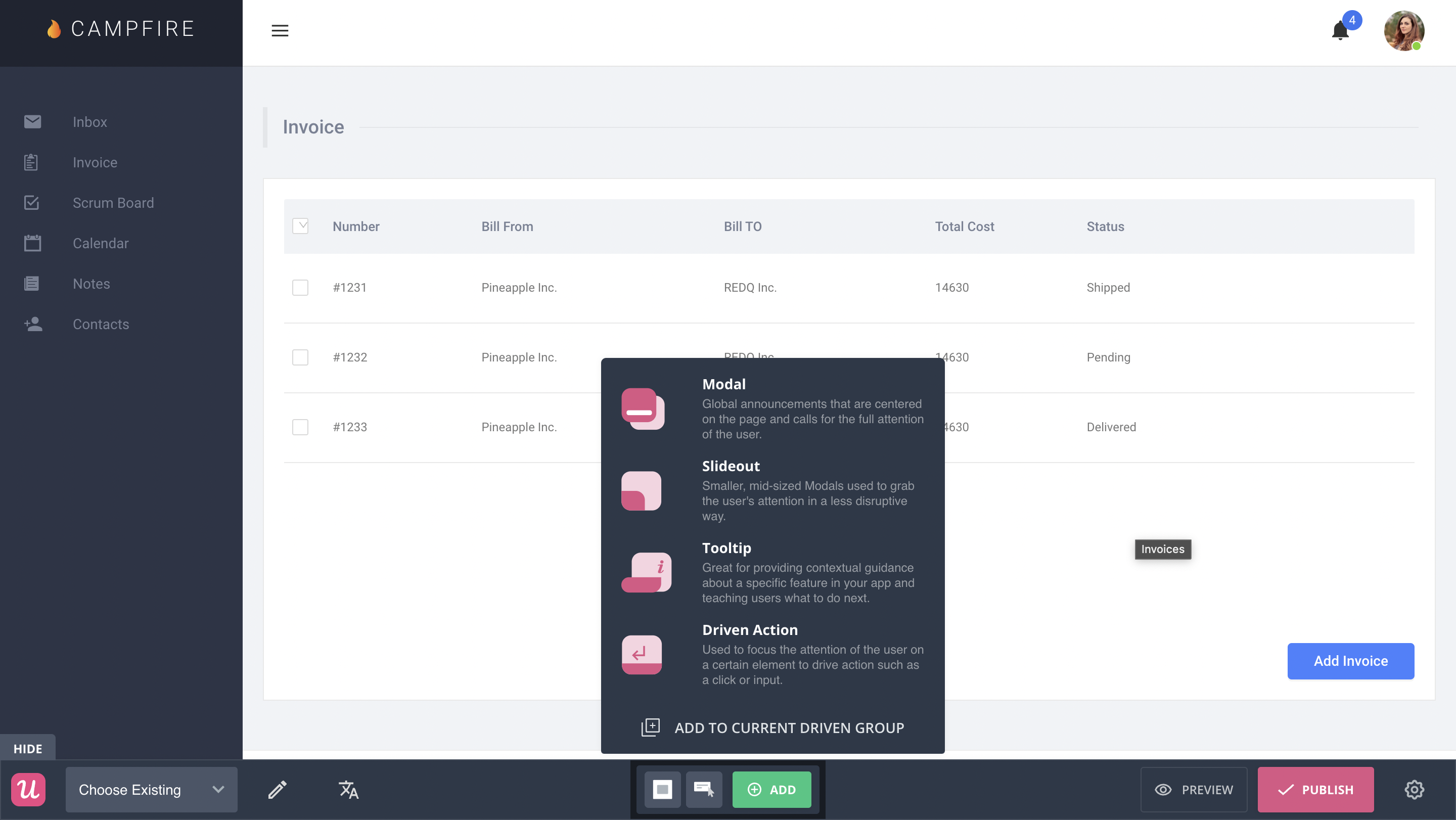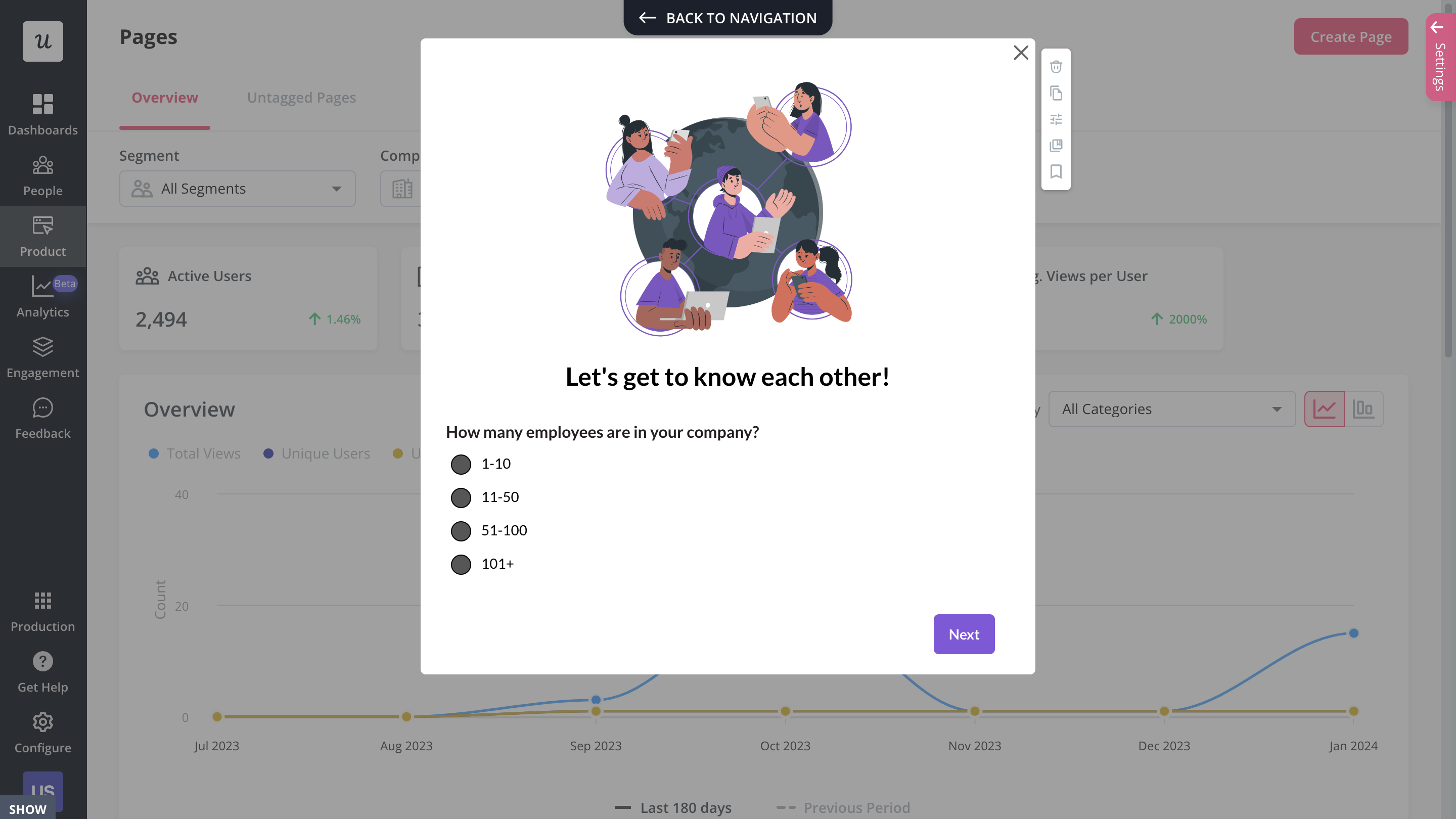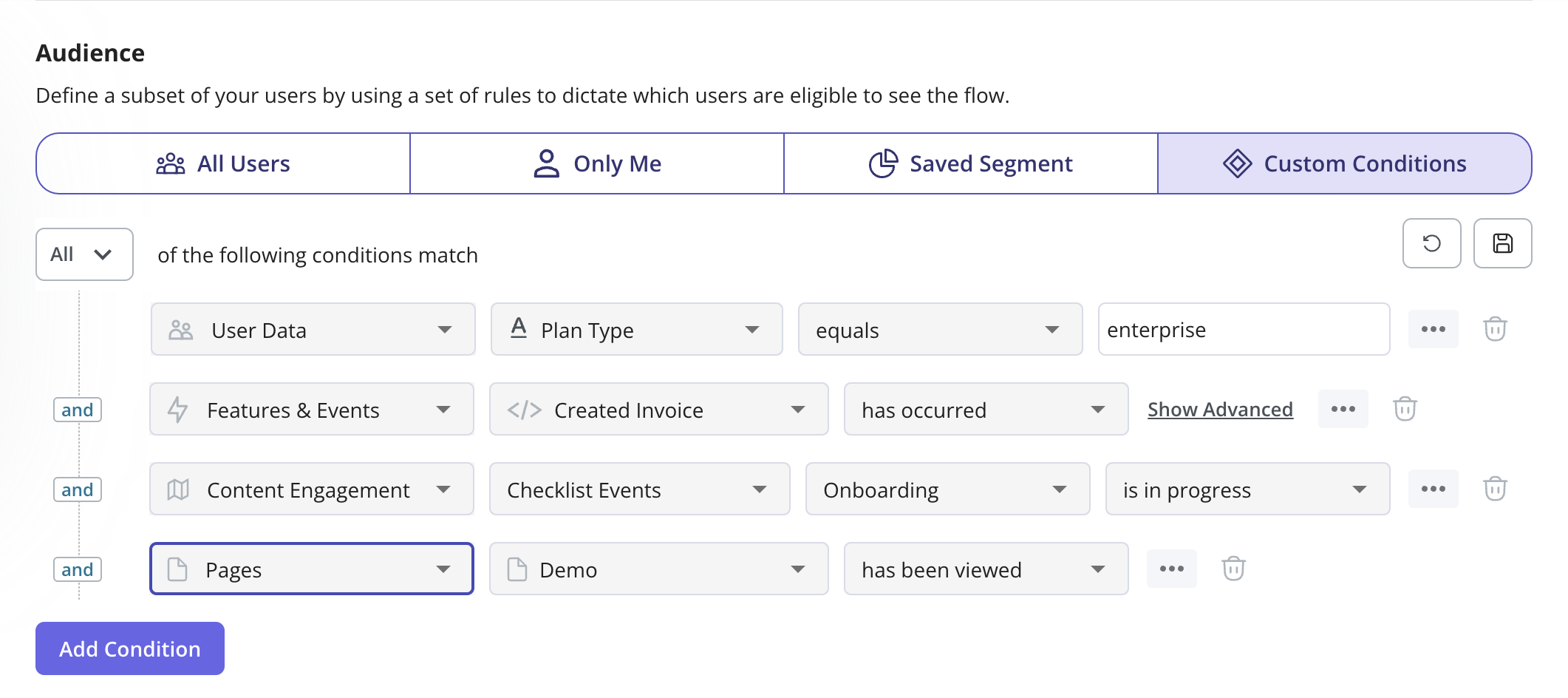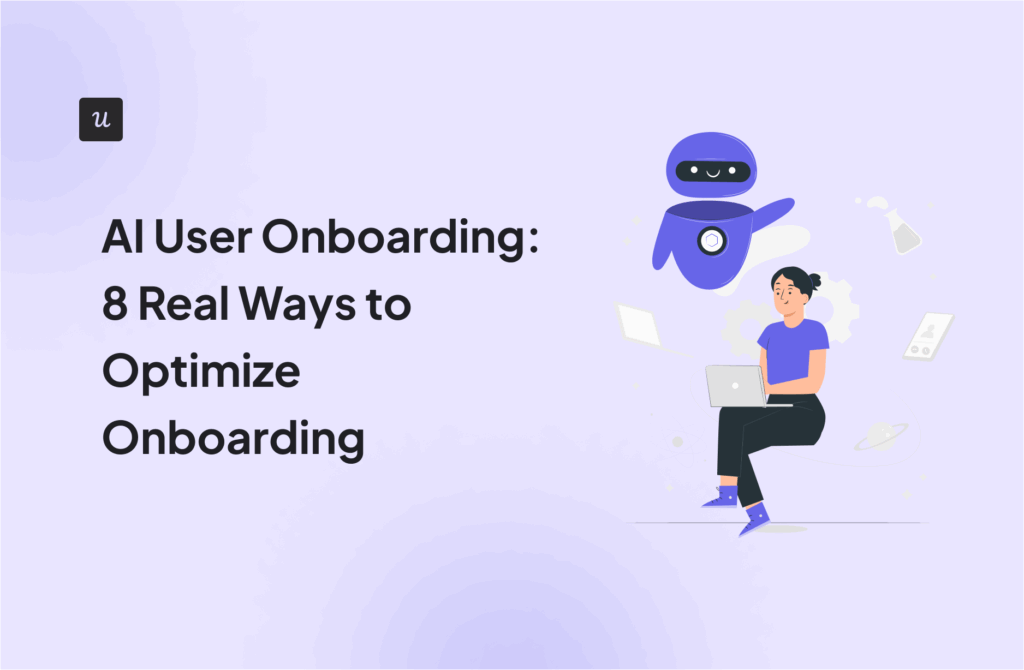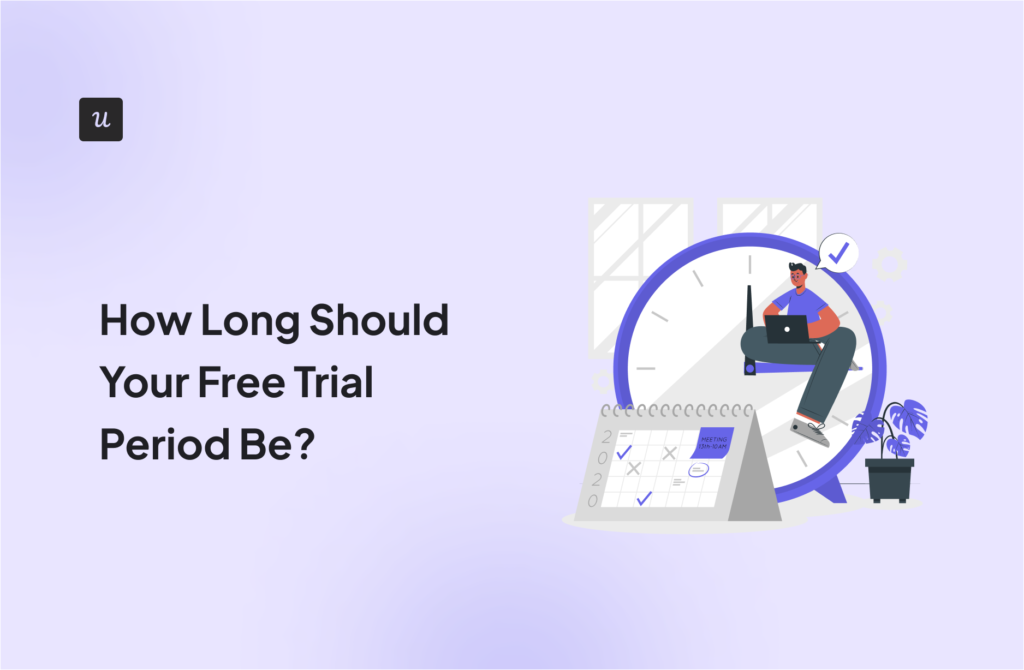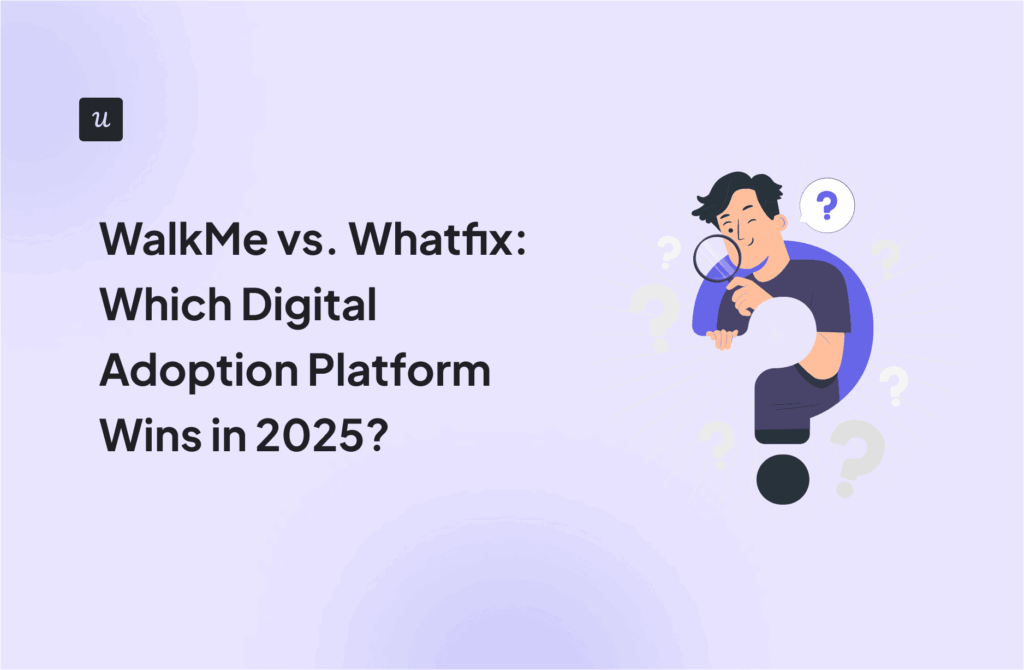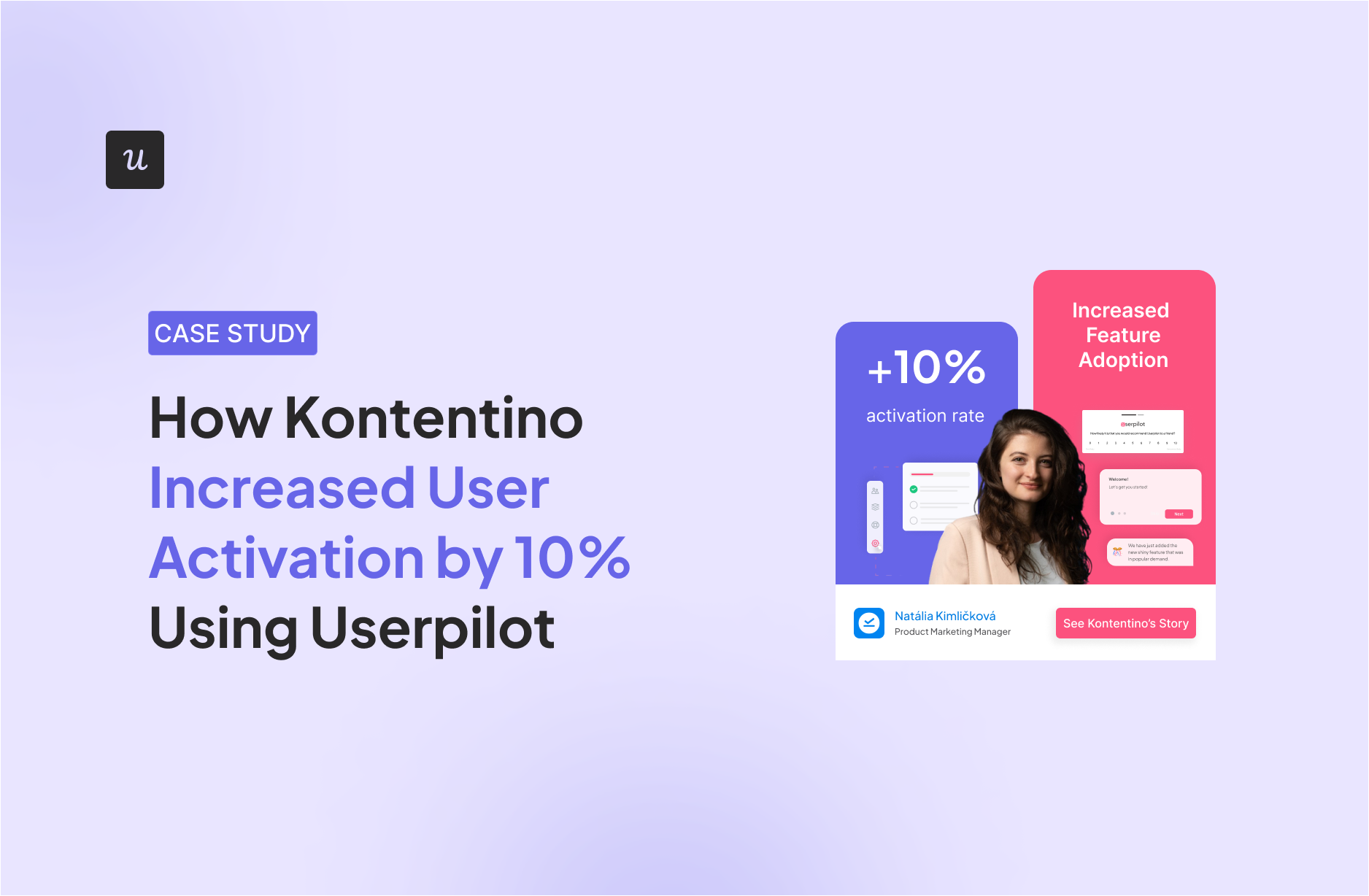
How Kontentino Increased New User Activation by 10% Using Userpilot
Natália Kimličková, a product marketer at Kontentino, a social media management tool for collaboration, content approval, and scheduling, came to Userpilot with a few main goals in mind – increase product/feature adoption, communicate new feature releases in-app, and create their very first user onboarding.
What she didn’t see coming though is the impact installing Userpilot would have on…how sticky Kontentino became.
In this post, we’re going to dissect what exactly Kontentino did to achieve a 10% boost in user activation in the first month of installing Userpilot!
Get The Insights!
The fastest way to learn about Product Growth, Management & Trends.
Quick returns
As one would expect with a social media management tool, the two main activation points for Kontentino users are 1) linking social media accounts and 2) scheduling the first posts.
To Natalia’s surprise – thanks to the onboarding flow set up in Userpilot – an interactive walkthrough and a checklist – both metrics increased by nearly 10% in the first month already.
“Easy to set up” and good value for money
“The whole product is really easy to use, and the product walkthroughs are really easy to set up,” said Natalia.
Choosing Userpilot was a pretty straightforward decision after the personalized demo. Natalia decided that Userpilot provides a much better value for money and wants to focus more on creating experiments to boost feature adoption after successfully creating and optimizing new user onboarding and activation.
Interactive walkthroughs – the key to success
The key to the 10% activation rate increase?
Kontentino used Userpilot to create an interactive walkthrough rather than a (boring and ineffective) product tour.
Much as I’m fussy about lengthy signup flows, I breezed through Kontentino’s signup flow with excitement and anticipation. Every element seemed to be well-thought through, and the copy was really personable, engaging, and well-written, with a clear brand voice shining through it. Let’s have a look at what Kontentino did right:
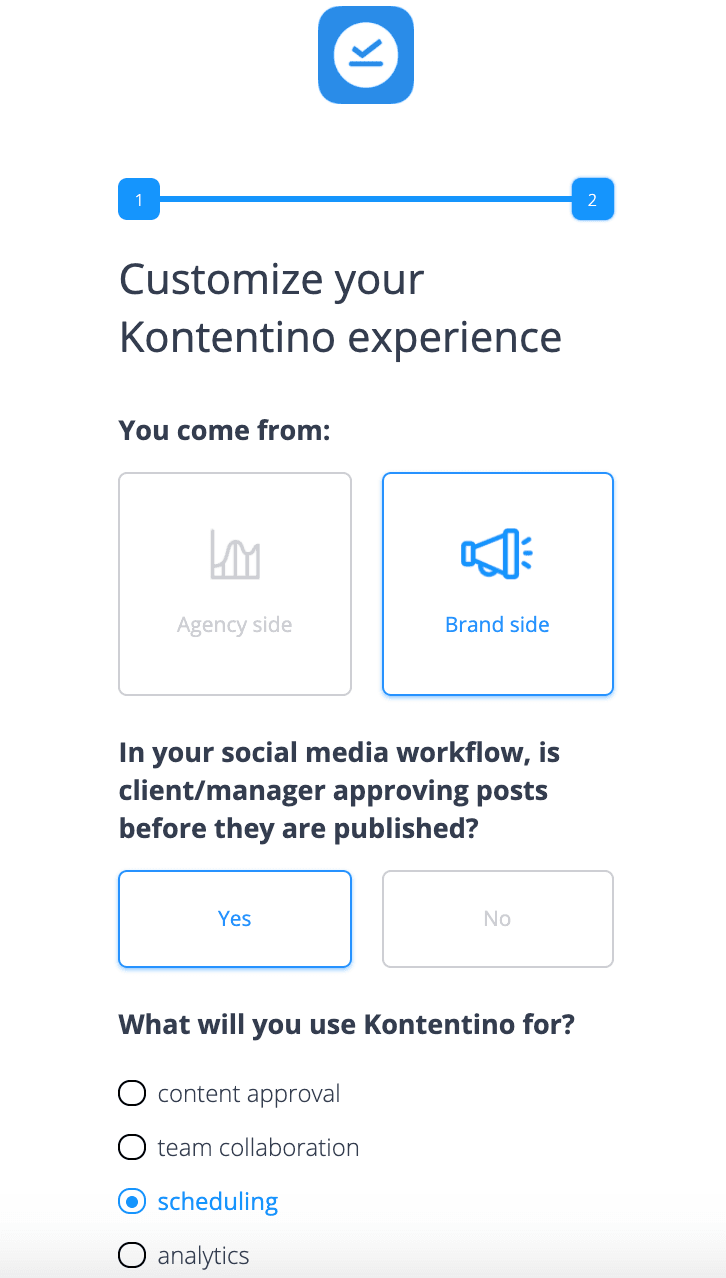
This allows Kontentino to segment its users and personalize their user journey. And as we know from our State of SaaS Onboarding research is the key to a high engagement rate (who wouldn’t want their journey to be relevant, after all?).
Next, Hana from Kontentino gives me a personal welcome in a modal inside the app:
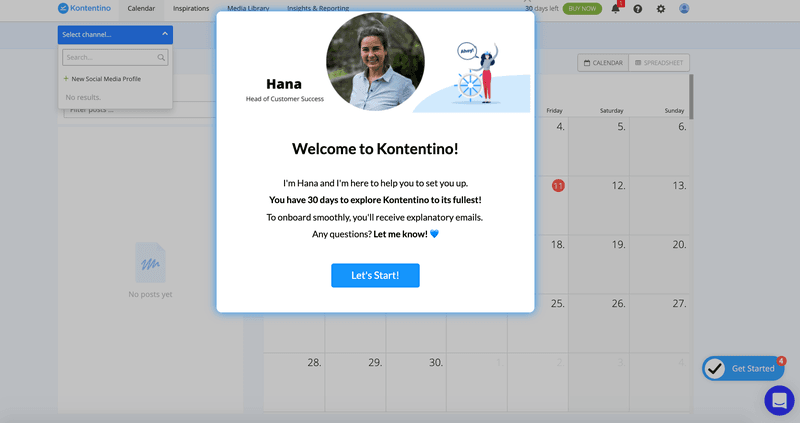
After clicking on ‘Let’s Start,’ I’m gently guided towards the two key activation points for a social media scheduler – 1) linking my accounts and 2) scheduling my first post.
Not less, not more – these two steps are enough for me to experience the AHA! moment (see the initial value in the product), but not enough to overwhelm me.
Kontentino guides me through a skillful combination of tooltips and driven actions (meaning – pointing my cursor to the right element in their UI):
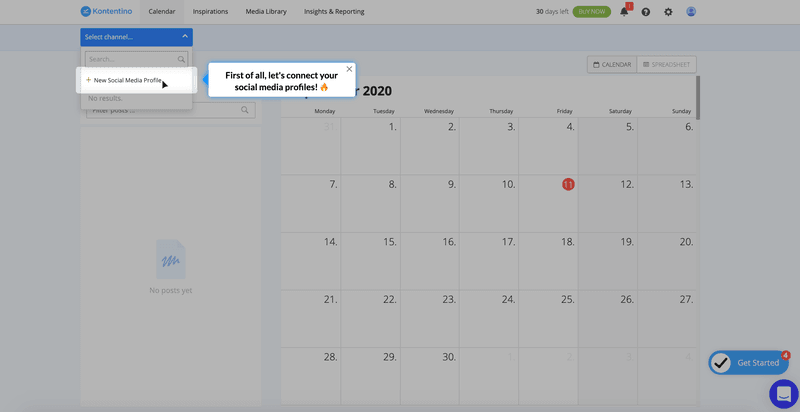
After linking my first account, Hana – the Kontentino teammate from the welcome screen – celebrates my success with a funny GIF:
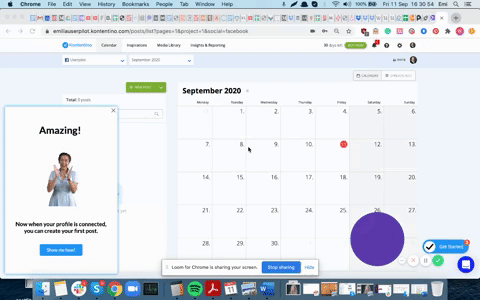
This, of course, gamifies the experience and motivates me to press on.
The next step – scheduling the first post – is equally easy:
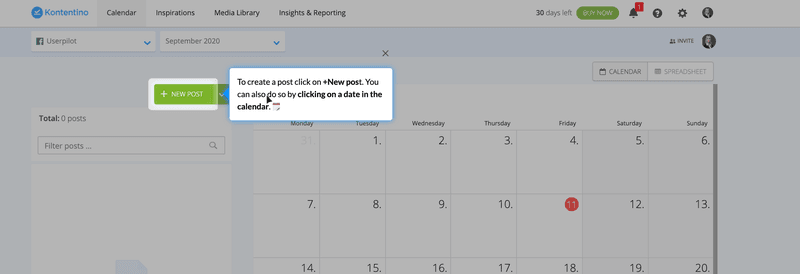
A series of tooltips guides me through the onboarding.
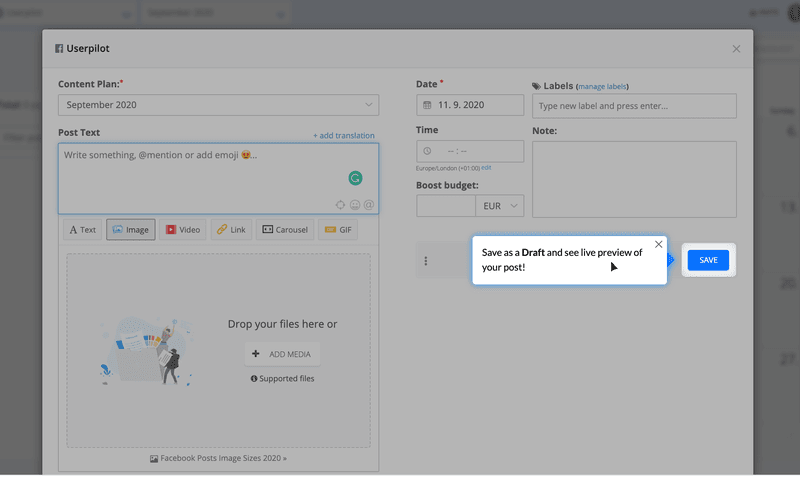
And I’m almost done with my onboarding!
Why use Userpilot for creating interactive walkthroughs?
Interactive walkthroughs are better than linear product tours because they let new users learn by doing instead of dumping a ton of information on them all at once. Userpilot’s no-code features let you build advanced interactive walkthroughs and create personalized flows for each segment.
Here are the Userpilot features you can use to create interactive walkthroughs:
- No-code builder: Installing the Userpilot Chrome extension makes it possible to build interactive walkthroughs with zero coding needed. You’ll be able to use every UI pattern — such as modals, slideouts, tooltips, and driven actions — regardless of which plan you’re on.
- Welcome surveys: Userpilot lets you create welcome screens that survey users on what their primary use cases, roles, needs, etc., are. You can create different walkthroughs depending on their responses to ensure that there’s a personalized experience for all.
- Audience settings: The audience settings in Userpilot flows help you trigger or hide walkthroughs from specific users and segments. This makes it possible to create interactive walkthroughs that target a particular segment or trigger a flow when certain conditions are met.
Conclusion
The whole product onboarding experience felt like something between taking a fun psycho test, and playing a game. An excellent way to engage agencies and brands! This is exactly how Kontentino managed to achieve a 10% boost in user activation in the first month of setting up their new onboarding experience!
Want to see what Userpilot can do for your brand? Book a demo today!


